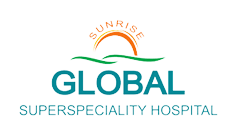Best Stroke Specialist in Nanded
Expert Care for Brain Health In Nanded
A stroke, frequently referred to as a “brain attack,” is a medical crisis that arises when there is turmoil in the blood supply to the brain. This interruption can lead to the quick casualty of brain cells, provoking a spectrum of debilitating signs.
Strokes can have profound and enduring impacts on an individual’s bodily and cognitive procedures, making prompt distinction and intervention vital. Acknowledging the cues of a stroke, such as sudden numbness, chaos, harsh headache, or difficulty speaking, is crucial for pursuing immediate medical attention.
However, the best stroke surgeon in Nanded can help you analyze and deal with the ailment. Let’s dig a slight deeper to find out about stroke in detail.
An Overview Of Stroke
Brain stroke can cause rapid, severe damage to brain cells, resulting in assorted physical and cognitive impairments. Prompt medical attention is essential to minimize brain damage and enhance healing opportunities after a stroke.
Strokes are typically categorized into two prominent types: ischemic and hemorrhagic. Ischemic strokes occur when a blood clot or plaque buildup snags an artery supplying the brain. While hemorrhagic strokes effect from a burst of blood vessels within the brain. Both types can have severe outcomes, comprising paralysis, speech difficulties, memory impairment, and even death.
What Are The Frequent Signs And Symptoms Of Stroke?
The signs and symptoms of a stroke can exemplify suddenly and require instantaneous medical attention. Common indications include:
1. Sudden Numbness or Weakness: Particularly on one side of the face, arm, or leg, often accompanied by a drooping appearance.
2. Confusion: Sudden trouble understanding speech or difficulty in speaking coherently.
3. Trouble Walking: Sudden dizziness, loss of balance, or difficulty walking.
4. Severe Headache: An abrupt, severe, and sudden headache.
5. Vision Problems: Sudden obscured or double image, or loss of vision in one or both eyes.
These signs may occur alone or in combination. Recognizing them and reaching out to the best headache specialist in Nanded is vital, as early intervention can minimize brain damage and improve the chances of recovery after a stroke.
Preventive Measures To Avoid Stroke
Prophylactic measures, such as lifestyle changes (e.g., managing high blood pressure, diabetes, and cholesterol levels), can enormously diminish the risk of stroke. Quick recognition of stroke signs and primary medical attention is crucial to underrate brain damage and optimize outcomes for stroke patients.
Stroke Diagnosis And Treatment In Nanded
The treatment for a stroke is a time-sensitive medical situation that hinges on the type of stroke and its stringency. There are two preliminary types of strokes: ischemic and hemorrhagic. The procedure of treatment offered by the best stroke physician in Nanded differs for each:
1. Ischemic Stroke
Thrombolytic Therapy: If caught within a specific timeframe, clot-busting prescriptions like tissue plasminogen activator (tPA) can be allocated intravenously to dissolve the clot obstructing the blood vessel.
Mechanical Thrombectomy: In some cases, especially when the clot is large, a process may be executed to mechanically withdraw the clot using a catheter-based approach.
Antiplatelet and Anticoagulant Medications: These pills can help stave off the building of new clots and diminish the menace of future strokes.
2. Hemorrhagic Stroke
Surgery: In severe issues, surgery may be important to repair the ruptured blood vessel or vacate accumulated blood in the brain.
Blood Pressure Management: Strict blood pressure control is important to prevent further bleeding.
Medications: Medications to decrease pressure in the brain and manage any underlying disorders contributing to the bleeding may be stipulated.
Conclusion
Stroke care comprises supportive measures such as oxygen therapy, fluids, and cautious monitoring of vital signs. Rehabilitation offered by the best neurologists in Nanded, including physical therapy, speech therapy, and occupational therapy. It is essential to helping patients recover lost functions. It also enhances their quality of life after a stroke.

